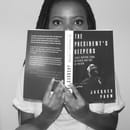Wouldn’t it be heavenly to have a professional makeup artist do your make up every day? Or seeing your make up magically done when you finish getting dressed every morning? Knowing the effort and background practice (as well as money) that goes towards the art of make up, I can safely say that these seemingly unrealistic dreams for every day life are completely valid. Mastering make up takes time, and even then you will still not be the master. Calm down, help has arrived.
1. Before any make up, CLEAN, MOISTURISE AND PRIME!
Make up on clear, clean, and moisturised skin > Make up on any other skin.
As we all know, make up applies in “layers”. It covers. Applying make up on a dirty face will keep the dirt under the make up and this will definitely be opening the door to breakouts and clogged pores. After cleaning and moisturising your face, prepare it for the make up by using a primer that suits your skin type. Alternatively, you can also use a moisturiser as a primer if you do not have one. Using a primer ensures a more flawless finish to your make up when applied.
2. Eyes first, everything else later
Personally, I start with my eyebrows, eye shadow, and lashes before anything else. I once tried doing my eyes after my face and noticed that I actually use my face as support to stop my hand from shaking and being unstable. Therefore my face gets messy and ruined if I do it before.
-
Eyebrows:
-
Eyebrow gel/liner/powder
-
A small, angled brush
-
Concealer to perfect the shape and leave your brow looking clean.
-
-
Eye shadow:
-
Eye shadow (duuuuuuh)
-
Brushes that you see fit to use on your eyelid and crease
-
Sometimes, eyeliner (I recommend liquid eyeliner to be used here)
-
Remember to prime your eyelid for the eye shadow. Use either an eyelid primer or concealer
-
-
Lashes:
-
For using fake eyelashes, lash adhesive is essential.
-
Mascara
-
an eyelash curler if you’re fancy.
-
3. Conceal and lay your foundation
By now, you should know that concealers are your multifaceted queens – they do everything for you. For this step, the concealer serves the purpose of hiding all your blemishes and scarring. When you get to an advanced level, you can play around with colour correcting as well. For the dark under eye circles, apply your concealer in an upside down triangle shape under your eyes and blend it in. Apply it on any other marks that you might want to hide and blend it in. When blending in, dab instead of rub to avoid moving the product all over. Try using a concealer that is two shades darker than yours to conceal marks and one that is either your shade or a tad bit lighter for under eye circles. After that, lay the foundation that you will build on. But, GO INTO A STORE TO GET A SHADE MATCH! Using the right foundation shade is NB! Take your concealer with you to see which product works best with your concealer shade.
4. Contour and highlight
Luckily, many brands have 3-step contouring kits that makes this step much easier. As a beginner, I would recommend starting by using powder products to have more control of the amount of product and easily build up where you feel is necessary. Contouring will make your face and nose look slimmer while highlighting emphasises certain features.
5. Ready, set, glow (mostly, glow then set)
The last step is my personal favourite. Using a setting spray and your highlight or ‘glow drops’, pull through with your glow.
Locations for the glow:
-
Cheekbones
-
Nose bridge and nose tip
-
Cupid’s bow
-
Below and on top of your brow arch
-
Your chin
And now, I pronounce you… ready to spritz yourself with setting spray to lock all your hard work in. Believe it or not, you are done! You are allowed to add colour or shine to your lips now.



